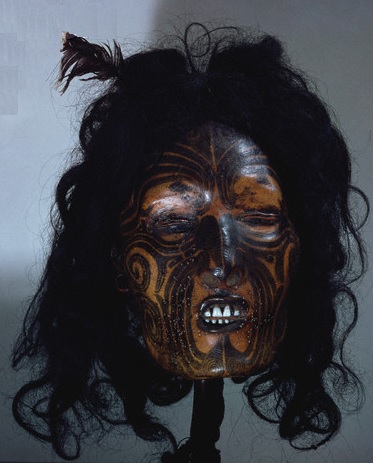59: Pheomelanin
- MD
- Jun 10, 2016
- 3 min read
Maori tradition states that the original inhabitants before Maori immigrated here were of mixed size, colour and appearance. Some had red hair. Many Maori who are not connected to political organizations and are therefore not interested in monetary gain will confirm these stories have been handed down for generations. Stories say the Patupaiarehe had light skin, and red or fair hair and that the Urukehu were ones with red hair.
There have been many reports of red haired natives from all around the world. This includes New Zealand. The French explorer Crozet who visited in 1783, said he saw “…three of four who had red hair”. The interesting part is where in the country he saw these people where 75% of them were with red hair. Cook states he saw fair skinned people with blonde or red hair in 1769. So lets assume these reports are correct and that living inhabitants of this land once had red hair. Now, what about the skeletons that have been reported to have been found with red hair? Are they simply Melanesians?

Let's consider burial practices. First of all Maori scraped the bones before burial, as all Polynesians including Hawaiians did. Yet the skeletons that have been found (or reported as being found) had hair attached. This is because the first here - the tangata Whenua as opposed to tangata Maori – buried there deceased whole, intact, often with their garments attached and without and alteration to the body. This being the case, the hair remained intact. However, notwithstanding that Cook and Crozett reported what they saw in person, there is a problem with finding red hair on ancient remains buried anywhere in the world. It is one of pheomelanin.

Hair can change colour after death. It’s just a scientific fact. What this means therefore, is that a dark haired person buried in a damp environment can have their hair change to red within a shot period of time. However, If they had red hair it will still be red. The problem remaining without scientific testing is this…
Any red haired tall-one found could have been darker haired that changed when the Eumelanin broke down
But any red haired tall-one found was not once dark as red haired individuals would still have their red hair.
Hair gets its color from two different types of pigments: eumelanin and pheomelanin. Eumelanin is the pigment that gives our hair its darkness, while pheomelanin gives our hair its redness. Your hair color is especially distinctive because it has its own unique combination of eumelanin and pheomelanin. Eumelanin has two subtypes: black and brown. If you have more black eumelanin in your hair, then it would naturally be a darker color. Consequently, if there is a total lack of black eumelanin and low levels of brown eumelanin, then there is a high chance of you being born with blonde hair. As you grow older, the eumelanin levels of both kinds drop, which causes the greying of your hair. Pheomelanin, on the other hand, is responsible for adding red and orange colors to your hair. It’s rare to have a high concentration of pheomelanin, which is why there are so few natural redheads in the world. It does, however, exist in some quantities in everyone’s hair. It is also more stable than eumelanin. Eumelanin breaks down easily through the process of oxidization, but pheomelanin does not. Pheomelanin tends to hang around within the hair even after being exposed to extreme conditions. Therefore, under wet oxidizing climates, the eumelanin in the hair is lost over extended periods of time, leaving behind the red pigment, pheomelanin.
In short, the answer is yes! There is a chance that your hair could turn red after you die! If you need a point of reference, you should look at the ancient Egyptians. Their mummies seem to sport a healthy shade of murky red, despite the centuries of decay. It does takes longer, though, for the oxidizing process to occur in controlled dry conditions like an Egyptian tomb. Even so, nature doesn’t discriminate.
So all we have to do now is find a scientific way of determining if strands of hair once had eumelanin nor not. However, let's get back to NZ. Preserved Maori heads show both black and red haired people existed.
That means that Archaeologists (such as one in Otago) cannot state with any accuracy that any red haired skeletons once had black hair. But it also means that the other end of the scale cannot assume that all red haired skeletons were red haired in life either. However, what it does show is that all skeletons with hair attached are not Polynesian!. Lets repeat that.
All skeletons found with hair attached are NOT Polynesian descendants.




















































Comments